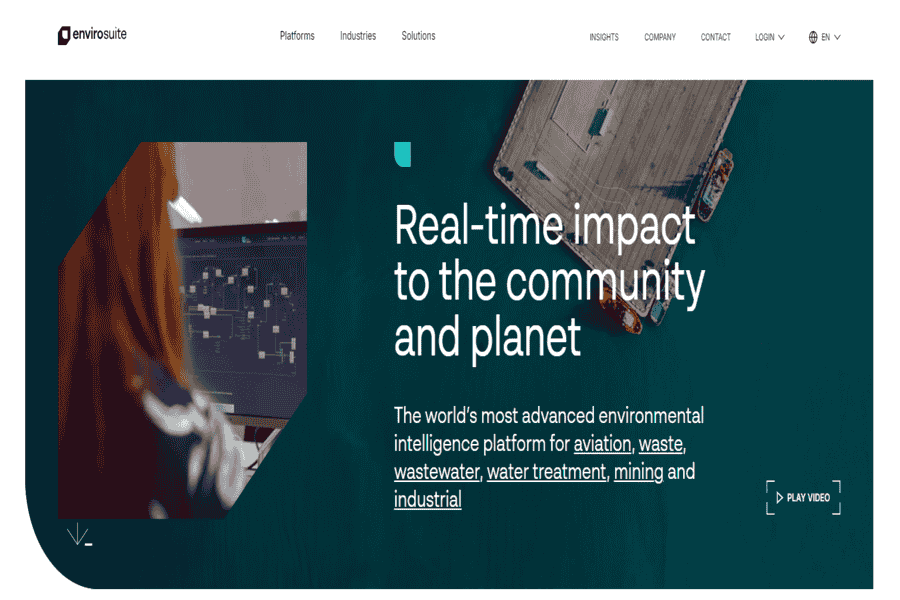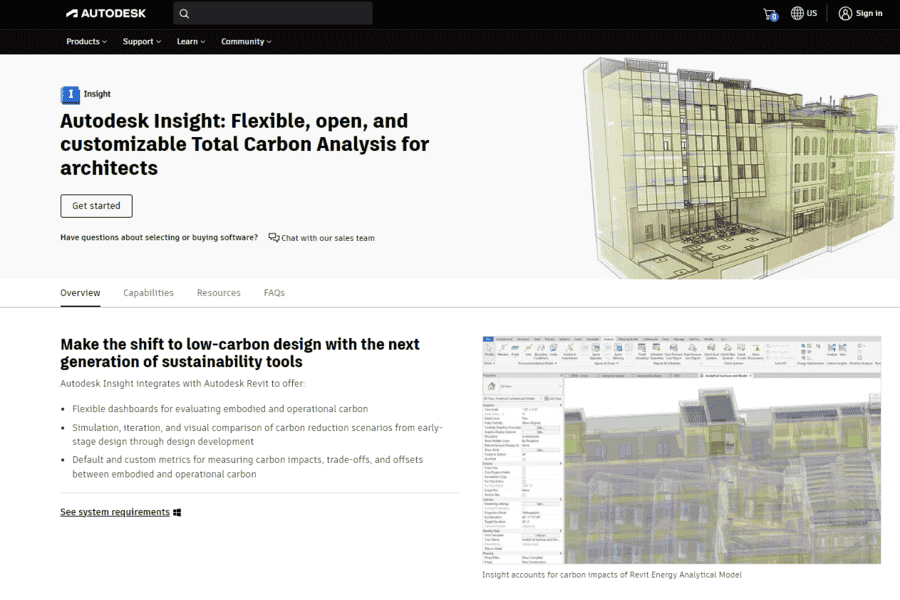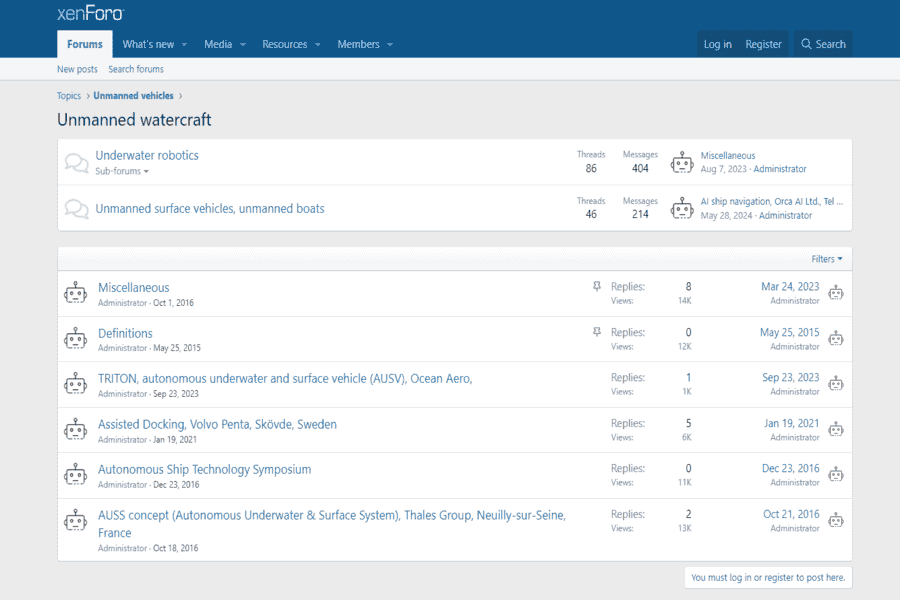Best AI-Powered Environmental Monitoring Tools in 2025
November 29, 2024


Environmental monitoring is crucial for understanding and addressing environmental challenges. Traditional monitoring methods, however, often involve manual data collection and analysis, which can be time-consuming and prone to human error. To overcome these limitations, AI-powered environmental monitoring tools have emerged as a powerful solution. By leveraging advanced algorithms and machine learning techniques, these tools can automate data collection, analysis, and interpretation, providing valuable insights to environmental scientists, policymakers, and industry leaders.
To ensure the availability and performance of your environmental monitoring systems, it’s essential to use website monitoring tools. These tools can help you identify and resolve issues before they impact your data collection and analysis efforts.
AI in environmental monitoring refers to applying artificial intelligence techniques to collect, analyze, and interpret environmental data. This involves using algorithms and models to identify patterns, trends, and anomalies in data from various sources, such as sensors, satellite imagery, and historical records.
AI has the potential to revolutionize environmental monitoring by providing valuable insights and enabling proactive measures. Here are some key applications of AI in this field:
AI-powered sensor networks can collect real-time data on various environmental parameters, such as air quality, water quality, noise pollution, and soil moisture.
Machine learning algorithms can analyze this data to identify trends, anomalies, and potential risks. For instance, AI can detect sudden spikes in pollution levels or predict future pollution events.
AI models can forecast future environmental conditions, such as extreme weather events, natural disasters, or changes in biodiversity.
AI can simulate different scenarios to assess the potential impact of various actions or policies on the environment.
AI algorithms can identify unusual patterns in data, such as sudden changes in temperature or unexpected spikes in pollutant levels.
By detecting anomalies early, AI can trigger alerts and promptly respond to environmental issues.
AI can analyze satellite and drone imagery to monitor deforestation, land use changes, and urban expansion.
In images and videos, AI can identify specific objects, such as illegal logging activities or endangered species.
AI can analyze news articles, scientific papers, and social media posts to extract relevant information and identify emerging environmental issues.
AI can analyze public sentiment towards environmental issues, helping to gauge public opinion and inform policy decisions.
AI-powered environmental monitoring tools offer numerous benefits for environmental management and conservation:
AI can provide accurate and timely data, enabling informed decision-making based on real-time information.
By forecasting future trends, AI can help anticipate and mitigate environmental problems.
AI-powered tools can continuously monitor environmental parameters, ensuring compliance with regulations.
AI can automate the generation of compliance reports, reducing administrative burden.
Automated data collection and analysis can significantly reduce labor costs.
AI can identify areas where resources can be allocated more efficiently.
AI-powered tools can engage the public in environmental monitoring and citizen science initiatives.
Visualizations and interactive tools can educate people about environmental issues.
AI can identify unusual patterns in data, enabling early detection of environmental issues.
Early detection allows for timely intervention and mitigation measures.

IBM’s suite offers AI-powered solutions for real-time environmental monitoring, using data analytics to track air quality, carbon emissions, and other environmental factors.
Custom pricing based on usage

A comprehensive environmental management platform using AI to monitor air, noise, and water quality in real-time, helping businesses comply with regulations.
Custom pricing based on requirements

AirVisual by IQAir offers an AI-powered platform for air quality monitoring, using real-time data to track pollution levels globally.
Starts at $99 for personal devices

ClimateAI uses machine learning to predict climate-related risks and impacts, focusing on agriculture and environmental sustainability.
Custom pricing based on needs

Sensedge AI offers solutions to monitor environmental factors like water quality, waste management, and air pollution using AI and IoT technologies.
Custom pricing

Airthings provides AI-powered indoor air quality monitoring solutions, helping businesses and homes track and optimize air quality.
Starts at $299 for devices

AI-powered wildlife monitoring platform that collects and analyzes camera trap data to monitor biodiversity and track animal populations.
Free and paid options for conservation organizations

Greenly uses AI to calculate and track your carbon footprint, offering tools for businesses to assess and mitigate their environmental impact.
Subscription starting at €99 per month

Xylem provides AI-powered water quality monitoring tools, helping companies track water quality in real-time to ensure safe and sustainable usage.
Custom pricing

AI-driven environmental monitoring tool for companies, helping track and report environmental data like emissions, waste, and water quality.
Starts at $149 per month

Sustainalytics provides AI-driven environmental, social, and governance (ESG) risk analysis and solutions, helping businesses monitor and improve their environmental impact.
Custom pricing

Tomorrow.io offers AI-powered weather forecasting and environmental monitoring tools, helping companies predict climate impacts and manage risks.
Custom pricing based on needs

BlueSky Analytics uses AI to monitor air quality and pollution data, providing businesses and governments with real-time analytics to manage environmental health risks.
Custom pricing

Planet Labs provides satellite imagery powered by AI to track environmental changes, deforestation, and land use over time.
Custom pricing

Airly offers a global network of air quality monitoring sensors powered by AI, helping cities and organizations track pollution levels and improve public health outcomes.
Custom pricing

Green Building Studio is an AI-powered energy and environmental simulation tool designed for architects and engineers to optimize buildings’ environmental impact.
Subscription-based, starting at $380/year

C3.ai offers AI-driven applications for environmental sustainability, including emissions reduction and energy management for industries and government agencies.
Custom pricing

IoT Systems leverages AI to monitor various environmental factors like air quality, water quality, and temperature, using IoT sensors to provide real-time data.
Custom pricing

Spire Global uses satellite-based AI technology to monitor environmental factors such as ocean conditions, weather patterns, and climate data.
Custom pricing

Aqua AI focuses on providing advanced AI-powered solutions for monitoring water quality and managing water resources efficiently across various industries.
Custom pricing
While AI-powered environmental monitoring offers significant benefits, there are several challenges and considerations:
Ensuring the accuracy and reliability of data collected from sensors and other sources is crucial.
More complete data is needed to ensure the effectiveness of AI models.
Noise in data can reduce the accuracy of AI-powered predictions and analysis.
AI-powered environmental monitoring often requires powerful hardware and sophisticated software.
As the volume of data and the complexity of models increase, the computational requirements can become significant.
AI models can inherit biases from the training data, leading to unfair or discriminatory outcomes.
It is important to understand how AI models arrive at their conclusions, especially when making critical decisions.
Protecting sensitive environmental data is crucial, and appropriate measures must be taken to ensure data privacy and security.
Some AI models, such as deep learning models, can be difficult to interpret, making it challenging to understand their decision-making process.
Rigorous testing and validation are necessary to ensure the accuracy and reliability of AI models.
The future of AI-powered environmental monitoring holds immense potential, driven by rapid advancements in AI, IoT, and data analytics. As these technologies continue to evolve, they are expected to revolutionize how we monitor, analyze, and address environmental challenges. Below are some key trends shaping the future of this field:
Edge computing, such as IoT sensors or monitoring devices, brings data processing closer to the source. This reduces the need for constant cloud communication, decreasing latency and enhancing real-time monitoring capabilities.
Faster detection of anomalies like pollution spikes or weather changes.
Smart sensors in forests detect fire risks and send immediate alerts to local authorities.
AI models that are explainable and transparent will gain importance as stakeholders demand greater accountability in environmental decision-making. Explainable AI provides insights into how AI systems reach conclusions, increasing trust among policymakers and the public.
Enhanced confidence in AI-driven environmental regulations and solutions.
Based on biodiversity data, AI models explain why certain areas are prioritized for conservation.
AI can democratize environmental monitoring by enabling citizen scientists to participate actively. User-friendly apps, AI-powered tools, and accessible sensors can allow individuals to contribute valuable data, bridging the gap between professional researchers and the public.
It increased community engagement in monitoring local ecosystems and identifying environmental issues.
AI-enabled mobile apps that let users measure air or water quality and report results to centralized databases.
Digital twins are virtual models replicating real-world environmental systems, allowing for simulations and predictive analyses. By leveraging AI, these digital replicas can forecast potential impacts and test mitigation strategies without affecting the physical environment.
Proactive decision-making and improved disaster preparedness.
I am simulating the impact of deforestation on a specific region’s water cycle and exploring restoration strategies.
AI-powered environmental monitoring is a powerful tool that can revolutionize how we understand and protect our planet. By automating data collection, analysis, and interpretation, AI enables us to make informed decisions, mitigate environmental risks, and promote sustainable practices. As AI technology advances, we can expect even more innovative applications that will help us address global environmental challenges.
